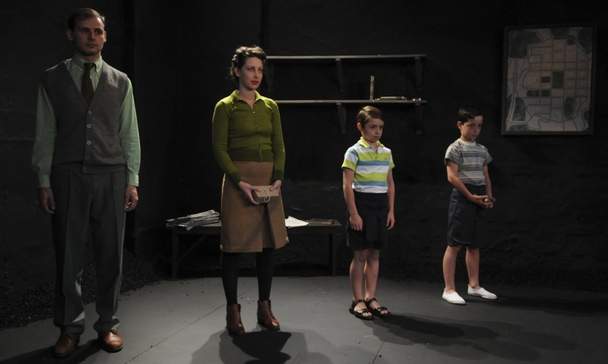Way To Heaven
This is a story stranger than fiction: of a concentration camp, Theresienstadt, that was held up to Jewish prisoners as a reward for good behaviour and to the world as a solution to the “Jewish problem”. The centre of life and the means of survival in this camp was the ability to perform, to act […]
Overview
This is a story stranger than fiction: of a concentration camp, Theresienstadt, that was held up to Jewish prisoners as a reward for good behaviour and to the world as a solution to the "Jewish problem". The centre of life and the means of survival in this camp was the ability to perform, to act your part — and in doing so, to show the world that you were alive and happy and perhaps also cope with the circumstances within which you found yourself. Presented to visiting Red Cross officials in 1944 as a model Jewish settlement, members of the camp were forced to reconstruct the town as a set, were dressed in their Sunday best and made to perform to a script. In reality, this 'performance' was so successful that it was followed by a film, cynically titled The Führer Gives a Village to the Jews.
All tricky stuff. However, director Tanya Goldberg describes Way To Heaven, the play loosely based on the Red Cross visit, as "more than a holocaust play". Juan Mayorga's script takes issue with what it means to perform and the relationship between our 'character' and our 'performances', questioning the essence of self and the relation of this to action. Goldberg's production employs a number of Brechtian-style distancing techniques to remind us that this is a performance, and not a historical reenactment: one account is given through a microphone, house lights are switched on during scene changes and actors fall purposefully in and out of role — both in the play, and in the play within the play (the performance of the chosen Jews to 'the visitor').
Nevertheless, the emotional dimension of this history is impossible to contain. In a plot where the ability to communicate or conceal something is a matter of life or death, performative symbols become incredibly powerful for the audience. The Jewish lullaby sung by a young girl is devastating, while the first appearance of the giant Nathan Lovejoy in SS uniform is pure horror. The demands which are made of the audience — to look into the eyes of various characters in this production — are unexplainably difficult.
Thankfully, the script, actors and audience are ultimately treated with great sensitivity. The collaborative, supportive community of Ride On Theatre, not to mention Griffin Theatre, is hugely significant in this. The long journey to staging this script, apparently five years in the making, has been a blessing in disguise for this production, resulting in a delicately nuanced and potent performance.
Image by Heidrun Löhr.
https://youtube.com/watch?v=eacIpUZfwoM





